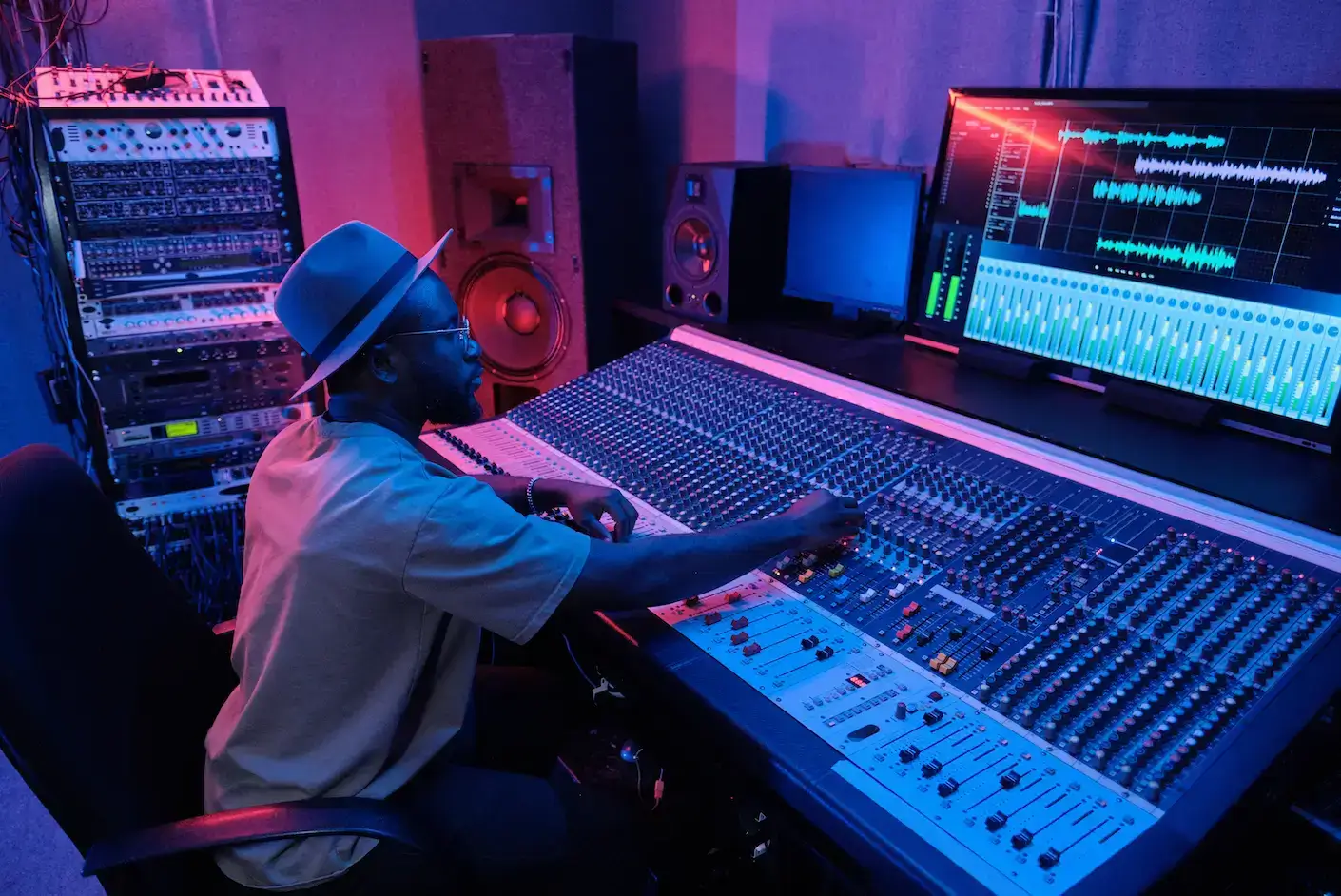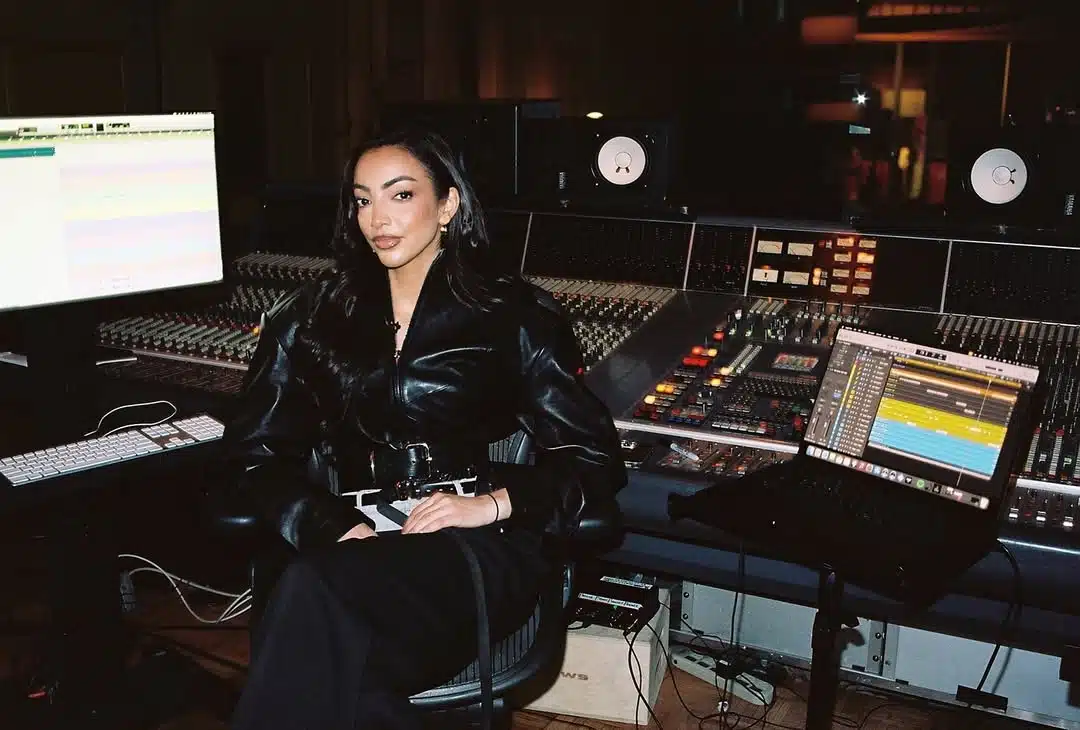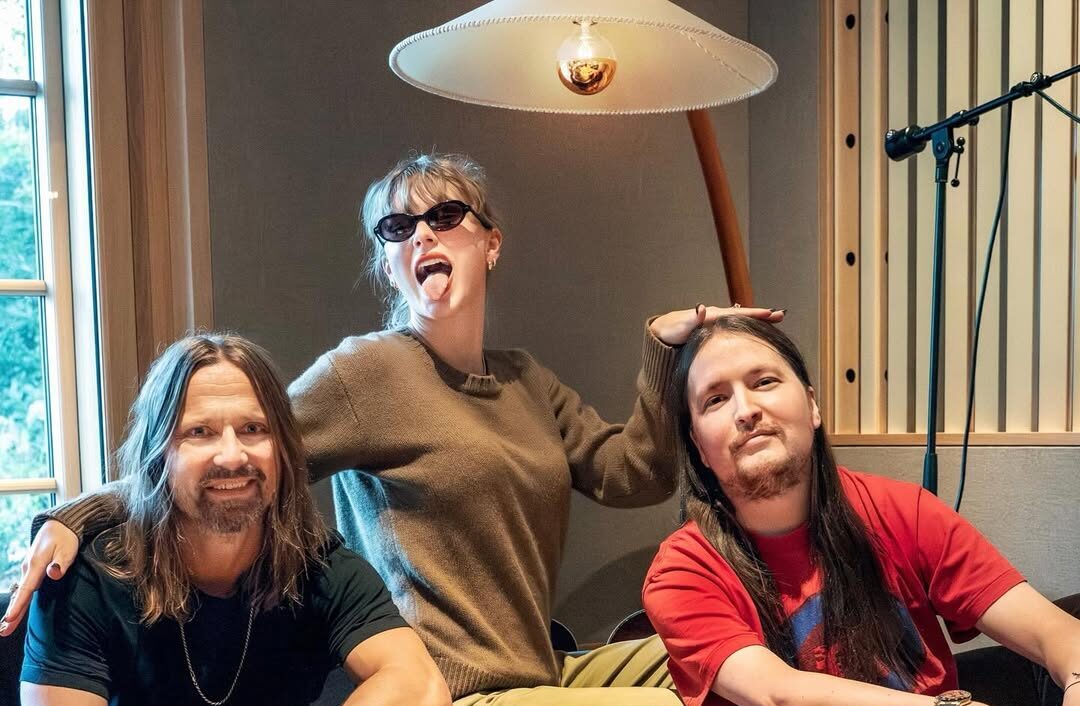Key Takeaways
- The music production process is a step‑by‑step flow from capturing an idea to mastering a finished track.
- Each stage has its job, like sketching ideas, arranging parts, recording takes, cleaning up audio, mixing levels, and polishing in mastering.
- Producers work faster when they use templates, finish rough drafts instead of chasing perfection, and treat the seven steps as a repeatable checklist.

Making music can feel like chaos when you don’t know what to do next.
Ideas come fast, but turning them into a finished track takes more than random button-clicking.
Every song you hear on the radio or streaming platforms went through a workflow that shaped it into something listenable.
These steps are habits that help producers go from scratchy phone notes to tracks that sound complete.
In this guide, you’ll see the seven steps most producers follow.
You’ll also learn a few tricks to move through the process faster and a simple roadmap to keep by your side.
By the end, you’ll know exactly how to finish more songs without losing your mind halfway through.
Step #1 — Capture the first idea
Hit songs often start when you least expect them.
A bass line in your head while you’re walking.
A melody that comes to you in the shower.
Leave it too long, and it’s gone.
That’s why every producer needs a way to trap ideas fast before they disappear into the void.
The simplest tool is your phone. Voice memos are perfect for humming into when a melody strikes.
For example, Grammy-nominated producer Steve Lacy has built entire tracks using just the Voice Memos app on his iPhone, proving that quickly grabbing the idea is more important than perfect gear.
If you’re near your computer, sketch something quick in your DAW (Digital Audio Workstation) using MIDI or even drag in a sample and loop it.
Keep it as small as possible. Four bars are enough. Don’t try to force a “song” yet. You just need proof that the idea exists.
The focus in this stage is speed.
Avoid searching for the “perfect snare sample” for half an hour. Nobody cares about that in a scratch idea.
What matters is capturing the vibe so you can return later. Think of this as your seed bank.
Organization helps too. Dump sketches into dated folders. Tag them by style if that helps.
Some producers even build playlists of half-baked loops they revisit later.
Most raw ideas won’t become full tracks, but the ones that are special will survive.
Do this consistently, and you’ll never sit down to produce with a blank mind.
You’ll always have material to build on instead of staring at your screen trying to invent brilliance out of nothing.
Step #2 — Build the core of the song
Once you’ve caught the spark, build its backbone.
That means the core elements: drums, bass, chords, and the main melody. These are the pieces that carry the character of the song.
Don’t try to perfect the sound design right now. Think of this stage as block-building.
Get your chord progression down. Lock in a groove with the kick and bass. Sketch out a melody line.
If these pieces aren’t moving you, no amount of shiny sound choices later will save them.
Keep it flexible. Don’t force big decisions too early because you’ll likely change things as the track grows.
Build with rough placeholder instruments or samples. You can swap the piano later or replace the bass sound later.
What matters is that the structure feels like music and not just scattered sounds.
Mood is a key decision here. Decide whether it’s tense, chilled, dark, or uplifting.
That single choice guides everything from tempo to instrumentation.
For example, aggressive drums feel jarring in a soft ambient track. Set the emotional tone early so your later decisions aren’t random.
By the end of this step, you want a skeleton that already feels listenable. It should sound like a simple song.
You’ll still add, cut, and replace later, but getting a strong base now is your safety net.
Producers who spend time here save themselves hours of fixing later when arrangements collapse halfway through.
Step #3 — Arrange the song into a structure
A loop of eight bars might sound cool on repeat. Listen back for ten minutes, though, and it becomes unbearable.
This is where arrangement saves the track by creating highs, lows, and flow.
Most songs work with variations of intro, verse, pre-chorus, chorus, bridge, breakdown, and outro. You don’t have to use all of them, but you do need changes.
Contrast keeps listeners hooked.
If the verse is stripped, the chorus feels bigger when it arrives. If every section is full-on, nothing hits hard.
Transitions matter as much as sections.
Add risers before a drop. Cut everything for half a bar before the chorus. Automate filter sweeps or volume fades to create movement.
These tiny changes are what separate a finished track from something looped in a bedroom.
Spacing is often more important than adding.
Delete layers that don’t add anything. Double-check if every new sound actually earns space in the mix.
Arrangement is the pause between what’s placed and what’s left out.
And it’s not just theory, one analysis of streaming data found nearly 24% of listeners skip a song within the first 5 seconds, and about 35% skip by the 30-second mark if nothing exciting happens.
Once you map the song from start to finish, listen without touching your DAW. If you make it through without losing interest, you’re set.
This is the moment the idea stops being “a loop” and starts sounding like a real composition.
Now it’s time to think about adding human performance on top.
Step #4 — Record vocals and live instruments
Adding recorded sounds brings a track to life.
Vocals, guitar, or even claps give a character that programmed MIDI can’t fake.
This doesn’t mean every track needs live takes, but even one or two performances can transform the vibe.
Preparation is everything in this stage.
Set your input levels right. Watch for clipping or distortion. Pick the right microphone for the source.
Listen to the room, you don’t want to capture buzzing fridges or loud fans by mistake.
The best producers get clean recordings at the source, so they don’t waste time fixing later.
Don’t rely on a single take. Even the best singers or guitarists usually need multiple passes.
Record several takes and later choose the strongest ones.
Comping, the process of stitching together the best lines from different takes, is normal.
In fact, vocal comping is now utterly ubiquitous in music production. Even top industry engineers use it on practically every track to achieve a flawless final vocal.
Listeners don’t hear the fifteen outtakes. They only hear the polished end result.
Keep recordings clean and dry.
Heavy reverb or delay should wait until mixing. Once baked into the recording, you can’t remove them.
Capture clean performances now so you have control later.
This stage also adds texture that elevates the track.
Imagine a simple beat with a real guitar riff layered in. Or a programmed instrumental lifted by a live vocal. It suddenly feels like someone is behind the music, not just a machine.
That human edge is what grabs ears and adds uniqueness to your track.
Step #5 — Edit and clean up the tracks
This stage is like tidying your room.
Nobody notices when it’s spotless, but everyone notices when it’s messy.
Raw recordings are full of imperfections, so clean them before worrying about flashy effects.
Start by removing unwanted noise.
Cut out clicks, hums, or random sounds between phrases. Use fades to avoid harsh edges between clips.
A track with clean edits feels tight, even to casual listeners.
Next, align timing. Performances almost always drift slightly.
Nudge vocals or instruments into time. Just don’t make it robotic unless that’s the style.
The aim is solid but natural.
Perfection can strip out all the groove.
Editing also includes removing what doesn’t need to be there.
Chop distracting breaths in vocals. Reduce overlapping frequencies by removing parts instead of adding more layers.
The goal is transparency. Listeners shouldn’t notice the edits, just the clarity.
Organization matters too. Label your tracks, colour code them, sort them into folders.
Messy sessions slow you down later and create mistakes during mixing.
A clean project file saves hours when you’re balancing levels and adding effects.
By the end of this stage, the session should be easy to run, and every element should sound crisp.
You’ve created a blank canvas for mixing.
Now, when you press play, the song feels intentional rather than cluttered with noise or sloppy timing.
Step #6 — Mix the song so everything blends together
Mixing is the step where raw tracks become a full picture.
The goal isn’t to make things louder but to make them fit together.
Think separation, balance, and clarity.
Start with volume. Pull all the faders down, then bring each track back in.
Get a balance where no part dominates unless you want it to.
Most mistakes come from ignoring levels before touching fancy plug-ins.
Move on to panning. Spread instruments across the stereo field to create space.
Guitars don’t need to sit on top of vocals. Place them differently so each one shines without clashing.
EQ is your best tool. Remove muddy lows from sounds that don’t need bass.
Carve space in mid-range instruments so they don’t mask each other. Most mixing is subtraction, not endless boosts.
Compression helps smooth out levels. Use it lightly to control spikes, not crush life out of the track. It should feel tighter but still breathe.
Add reverb and delay carefully. A touch of reverb glues tracks together, but too much makes everything swampy.
Keep delays in time with the beat so they feel like part of the groove.
One of the real skills in mixing is knowing when to stop. Endless tweaking makes you deaf to your own mix.
Step away, return with fresh ears, and check it again.
Play it on small speakers, car stereos, and headphones.
A real mix sounds consistent on all of them.
For instance, legendary engineer Bruce Swedien would test his mixes on different speakers at various volume levels to ensure a song sounded great in any environment.
If a mix works on a tiny speaker at low volume, it’ll shine on big speakers too.
Finished mixes don’t mean every instrument shines like a solo act.
They mean the song feels unified, with nothing sticking out awkwardly, allowing the listener to focus on the music rather than the engineering.
If you can play a track start to finish and it flows without distraction, you’re ready for the final touch.
Step #7 — Master the track for polish and release
Mastering is the coat of finish.
It makes the mix sound balanced, consistent, and polished across every system.
This stage focuses on subtle moves.
EQ smooths out tones.
Compression glues the track so it feels consistent instead of scattered.
Limiting pushes the volume so it matches industry levels without clipping the sound.
The main job of mastering is translation.
Your track must sound clean on budget earbuds, clear in a car, and powerful on club speakers.
That’s why engineers often test across multiple setups.
Many producers are tempted to self-master with plug-ins. This can work, but it’s easy to lose objectivity.
You’ve heard your mix hundreds of times and probably tuned out its flaws.
For that reason, professional mastering engineers are valuable. They come in fresh and spot problems instantly.
Don’t expect mastering to fix weak mixes. It can’t.
If the foundation is shaky, polish won’t rescue it.
But with a strong mix underneath, mastering gives it the edge to compete against commercial releases.
By the end of mastering, your track is ready.
It’s polished enough to release, whether on streaming platforms, physical formats, or club systems.
It won’t sound louder than everything in the world, but it will sound professional and consistent.
Why professional mixing and mastering matter
There’s a reason most finished songs pass through a professional studio before release.
Mixing and mastering in a treated space with experienced ears gives your music a level of depth that’s hard to reach alone.
A professional mix balances your instruments with precision, keeping everything clear and dynamic without losing the emotion.
Mastering in that same environment ensures your track translates well everywhere, headphones, cars, clubs, and streaming platforms.
It’s not just about fancy gear, but about perspective.
Professional engineers bring a neutral ear to your work, notice small issues you’ve grown used to, and shape the sound so it feels complete.
The final layer of polish will focus on ensuring your song connects exactly how you intended.
A simple roadmap you can follow for your next track
Here’s the workflow stripped down.
First, capture sparks quickly, and keep every idea safe.
Next, build the core section with drums, bass, melody, and chords.
Then map out an arrangement so it plays from start to end without feeling stuck in loop hell.
When the foundations are tight, move to mixing, balancing levels, EQing clashing sounds, adding space, and checking the track across devices.
Once solid, master it for polish and consistency. That’s how it gets ready to release.
Follow it step by step. The order matters. Jumping ahead wrecks progress and slows the finish.
Work through them in sequence, and you’ll hit fewer frustrations.
Use this as your track checklist. Over time, finishing won’t feel like grinding uphill. It’ll be natural because you’ll know exactly what comes next.
Focus, repeat, and the process becomes part of your flow.
The more you cycle through it, the better your songs will sound.
If you’ve already gone through this process a few times, take one of your tracks to a professional studio and listen to it in that environment.
Hearing your own mix in a space designed for accuracy shows you things your home setup hides.
Sometimes it’s small details, a vocal sitting cleaner, a bass that suddenly fits, a sense of space you didn’t know was missing.
Those moments teach you what to listen for the next time you produce. And that’s how you keep growing, not by chasing perfection, but by learning how your music can sound at its best.








